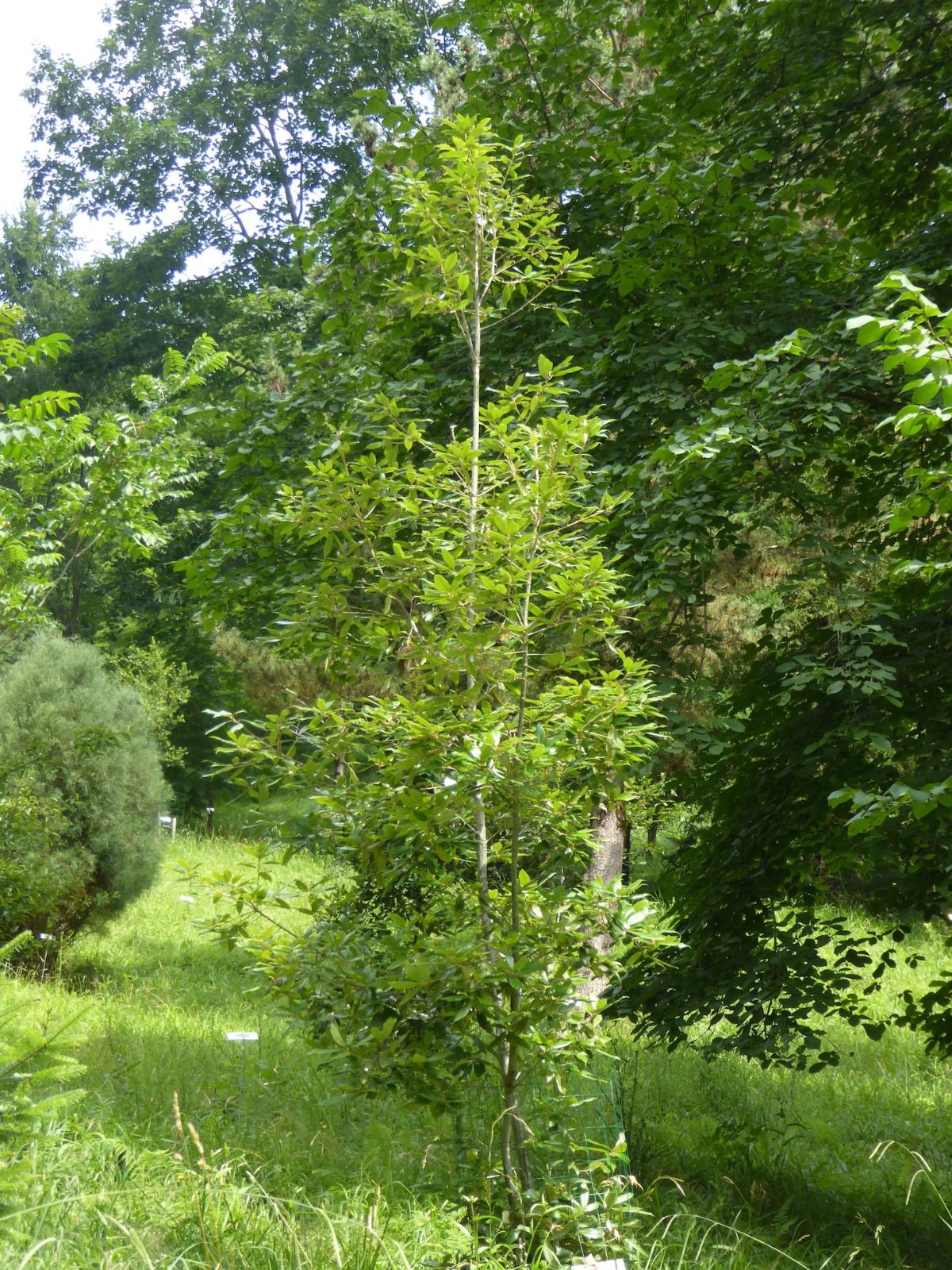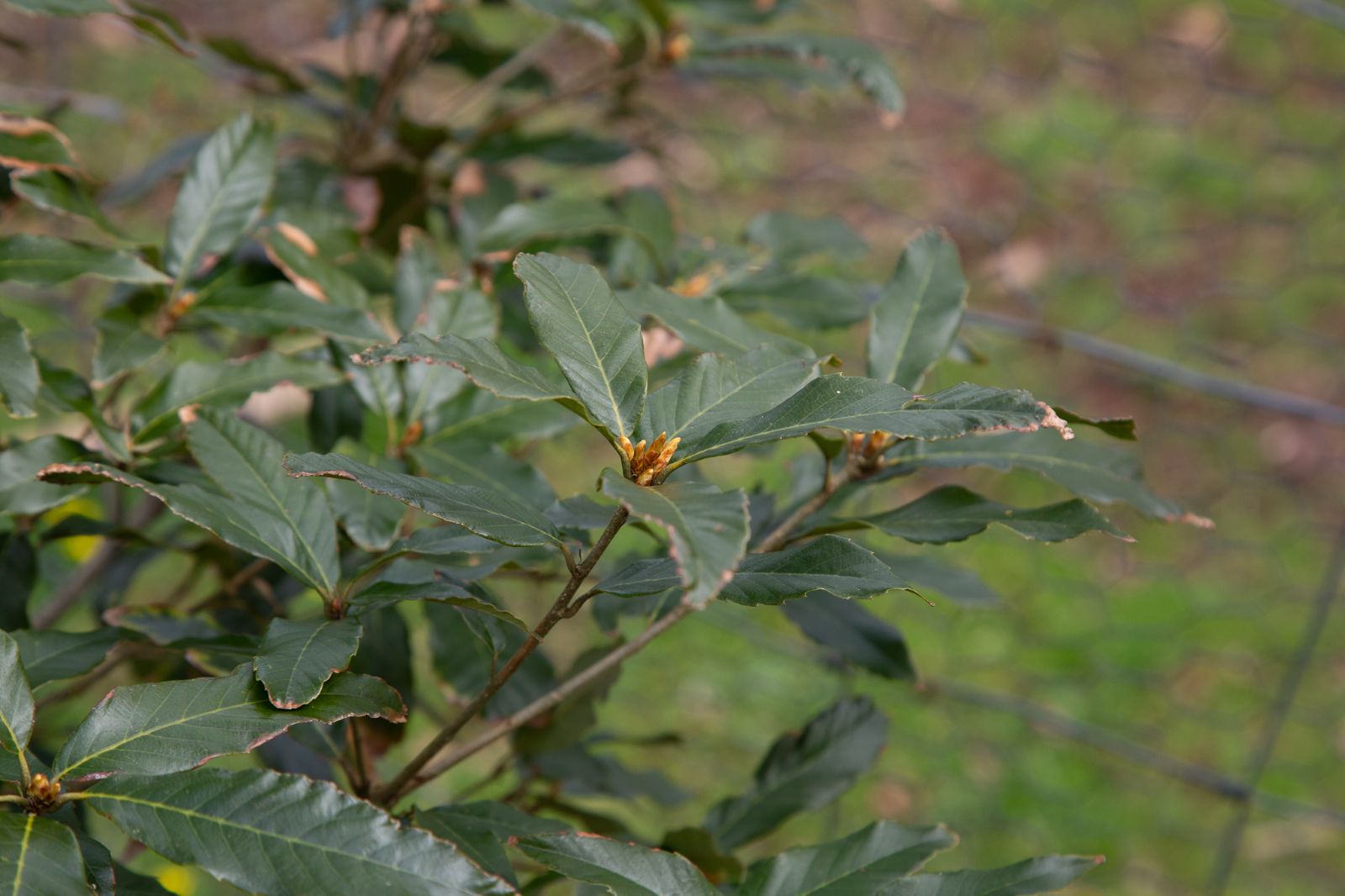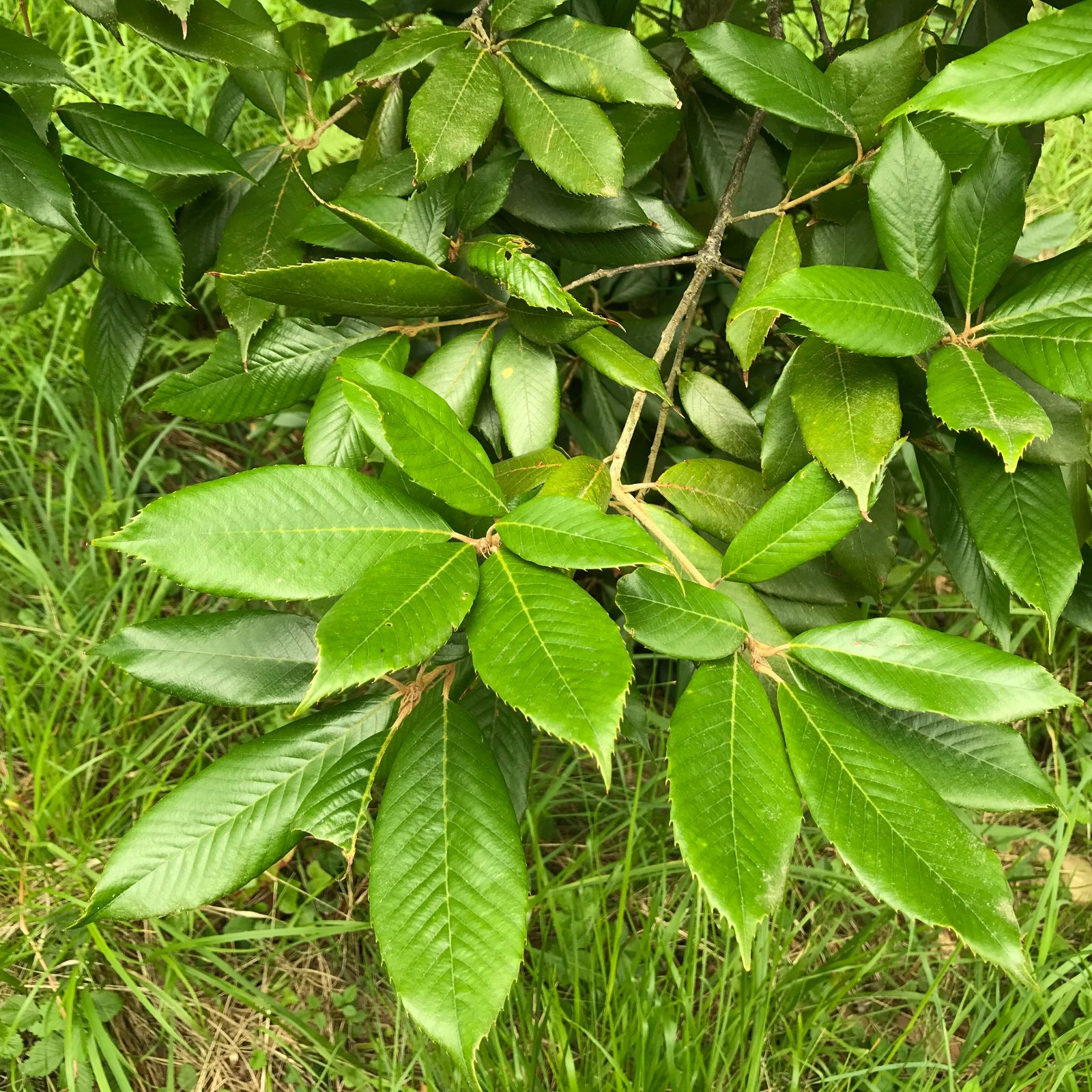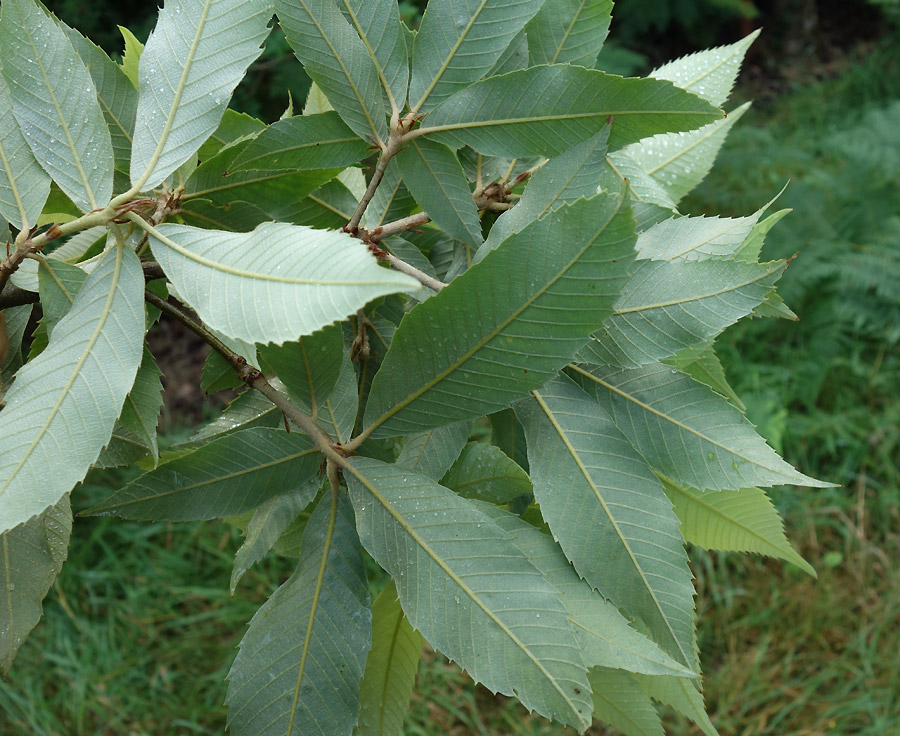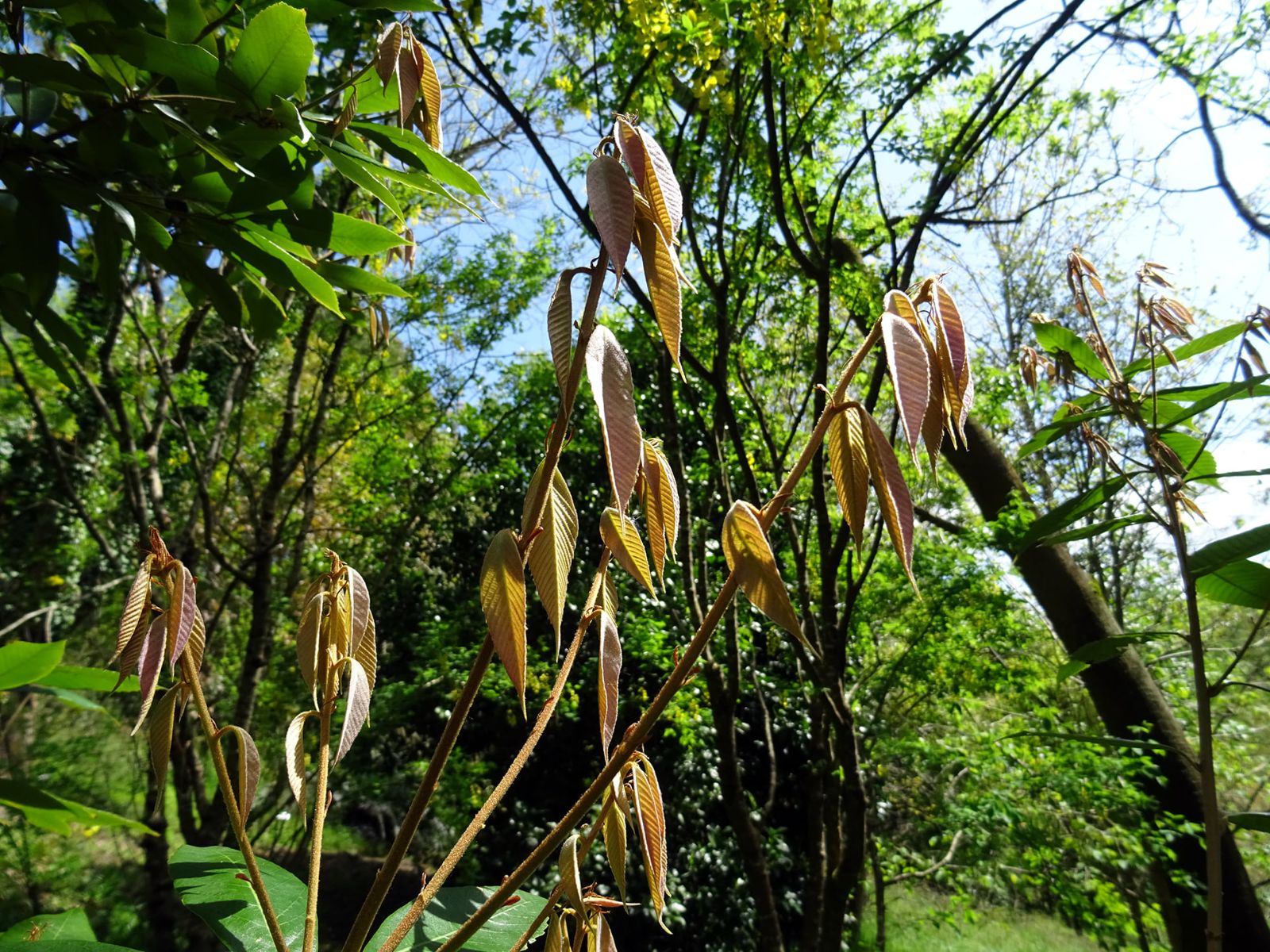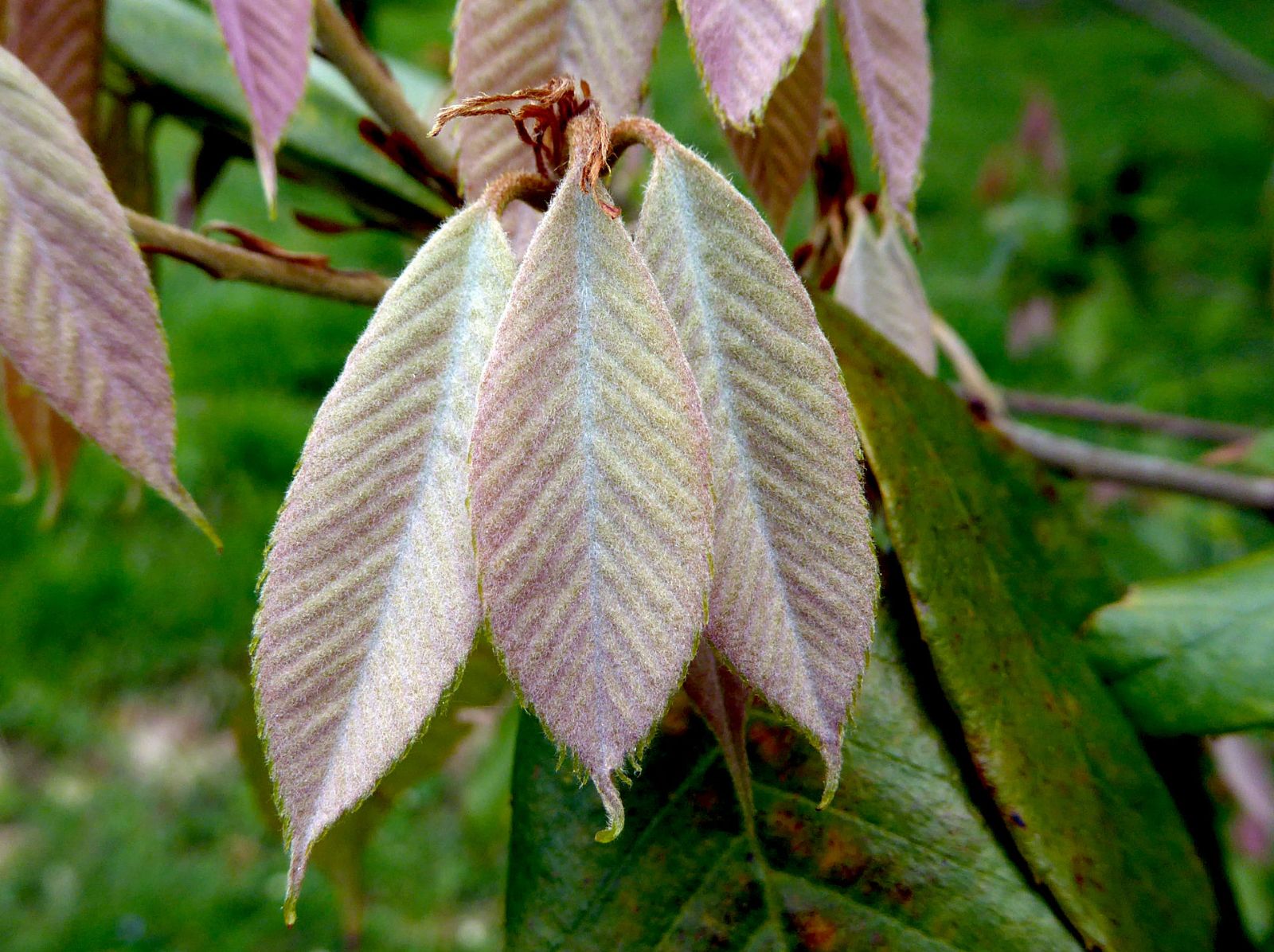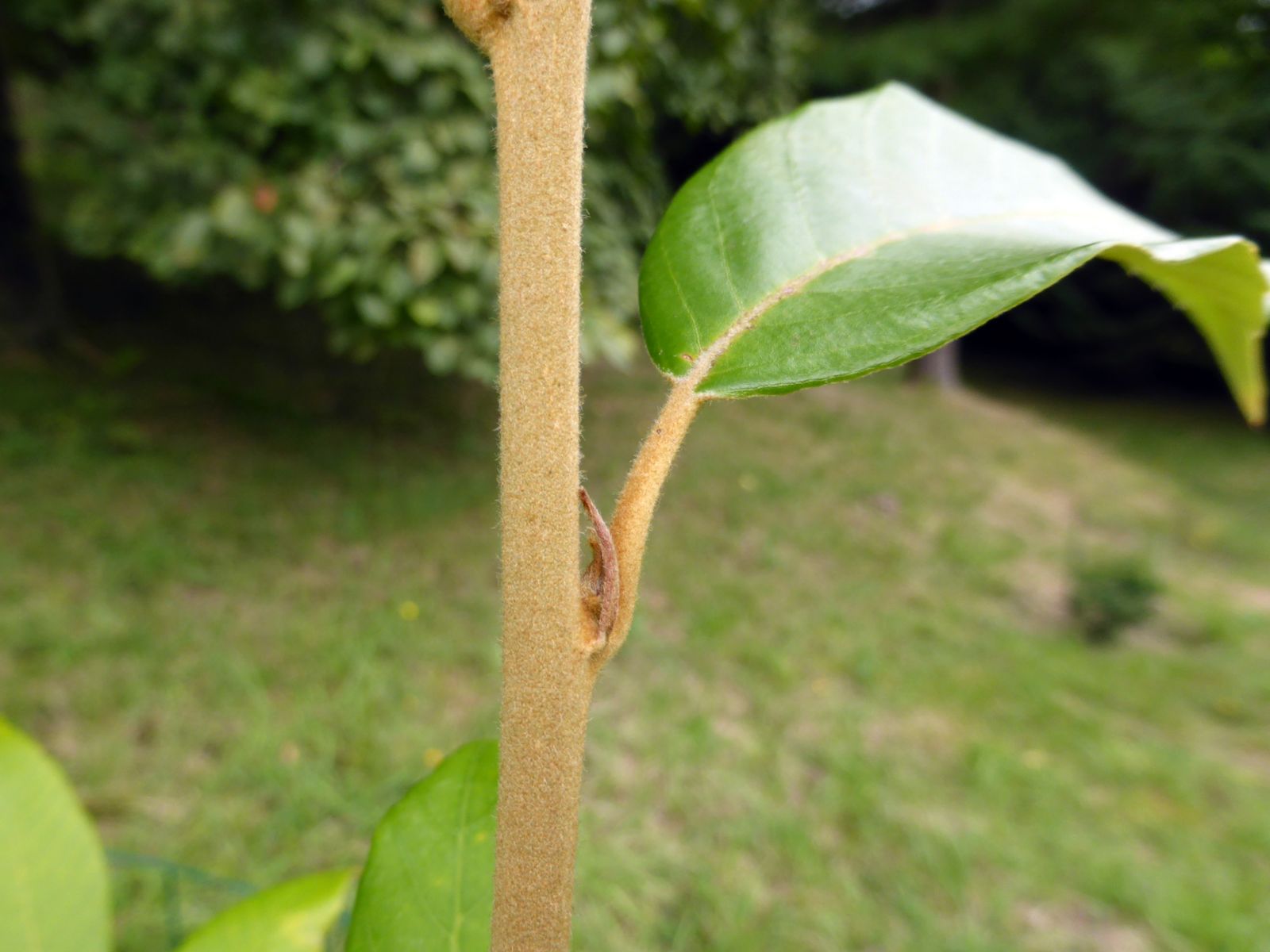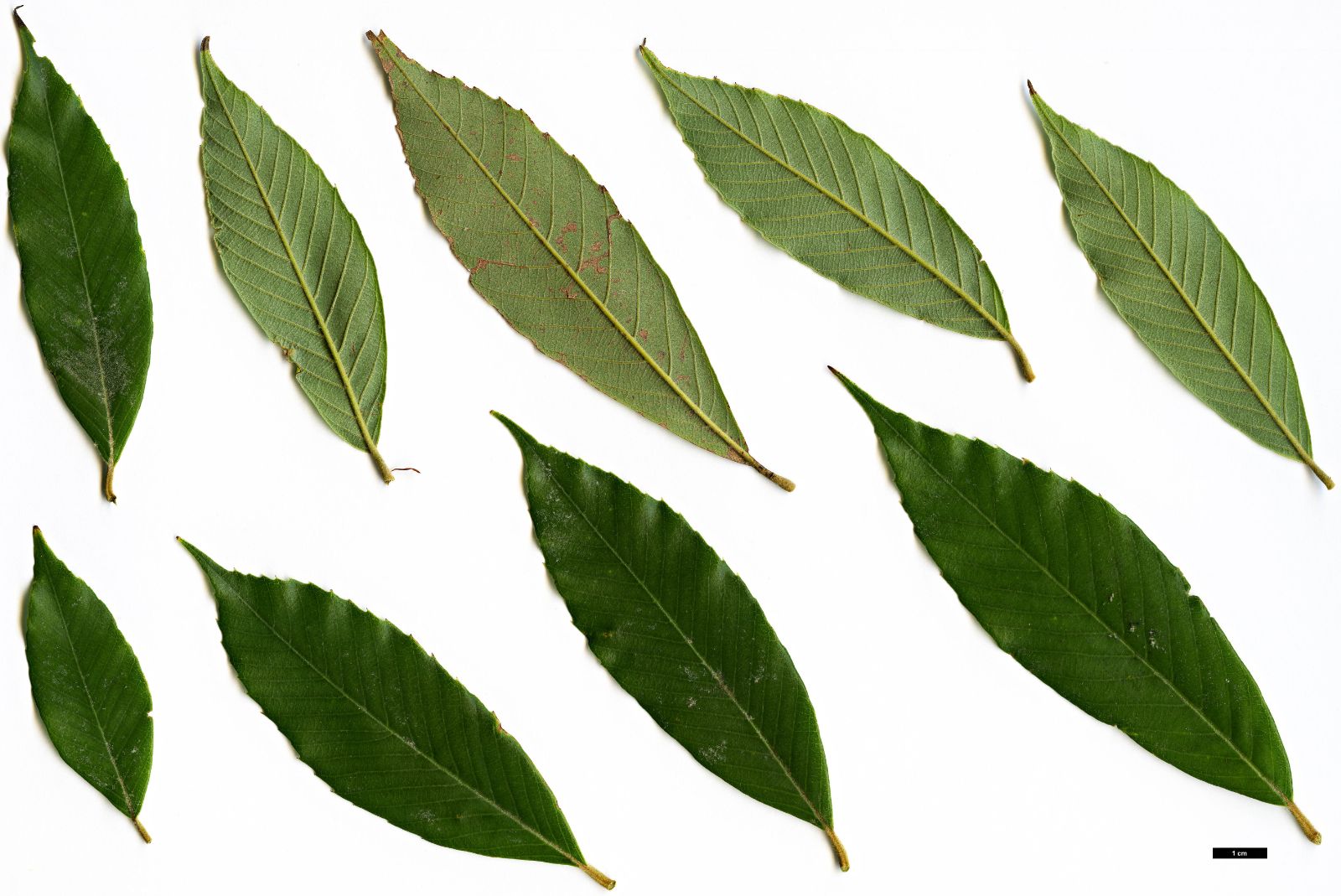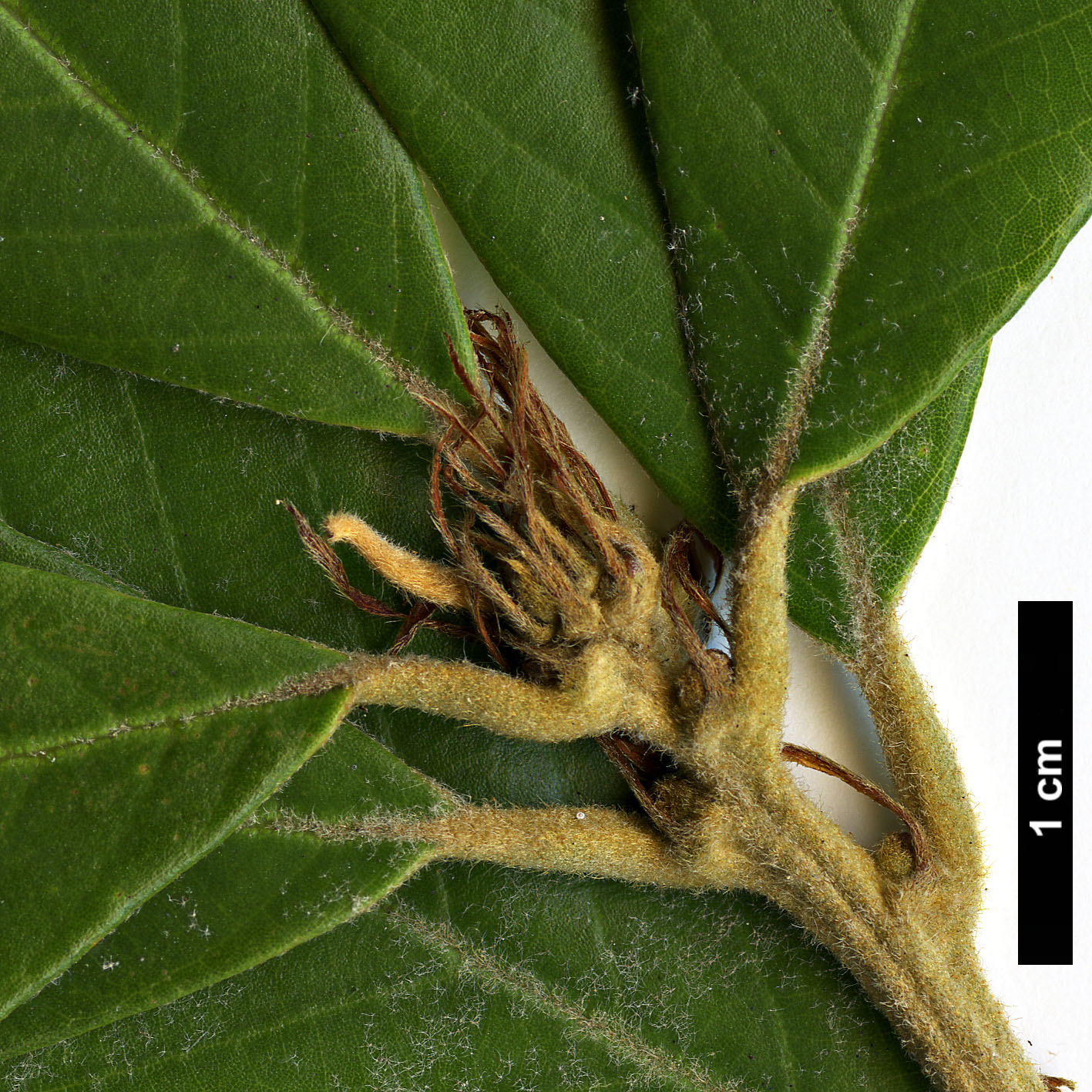Quercus lobbii
Sponsor
Kindly sponsored by
The Trees and Shrubs Online Oak Consortium
Credits
Allen Coombes & Roderick Cameron (2022)
Recommended citation
Coombes, A. & Cameron, R. (2022), 'Quercus lobbii' from the website Trees and Shrubs Online (treesandshrubsonline.
Genus
- Quercus
- Subgen. Cerris, Sect. Cyclobalanopsis
Common Names
- 滇西青冈 (dian xi qing gang)
Synonyms
- Cyclobalanopsis lobbii (Hook.f. & Thomson ex Ettingsh.) Y.C.Hsu & H.Wei Jen
- Quercus lineata var. lobbii (Hook.f. & Thomson ex Ettingsh.) Wenz.
Other taxa in genus
- Quercus acerifolia
- Quercus acherdophylla
- Quercus acrodonta
- Quercus acuta
- Quercus acutifolia
- Quercus acutissima
- Quercus afares
- Quercus affinis
- Quercus agrifolia
- Quercus alba
- Quercus aliena
- Quercus alnifolia
- Quercus aquifolioides
- Quercus arizonica
- Quercus arkansana
- Quercus aucheri
- Quercus augustini
- Quercus austrina
- Quercus × auzendei
- Quercus baloot
- Quercus bambusifolia
- Quercus baronii
- Quercus bicolor
- Quercus brantii
- Quercus buckleyi
- Quercus canariensis
- Quercus canbyi
- Quercus candicans
- Quercus castanea
- Quercus castaneifolia
- Quercus cerris
- Quercus chenii
- Quercus chrysolepis
- Quercus coccifera
- Quercus cocciferoides
- Quercus coccinea
- Quercus conspersa
- Quercus crassifolia
- Quercus crassipes
- Quercus delavayi
- Quercus dentata
- Quercus deserticola
- Quercus dolicholepis
- Quercus douglasii
- Quercus dumosa
- Quercus durifolia
- Quercus eduardii
- Quercus ellipsoidalis
- Quercus emoryi
- Quercus engelmannii
- Quercus engleriana
- Quercus euboica
- Quercus eugeniifolia
- Quercus fabri
- Quercus faginea
- Quercus falcata
- Quercus floribunda
- Quercus frainetto
- Quercus franchetii
- Quercus fruticosa
- Quercus fusiformis
- Quercus gambelii
- Quercus garryana
- Quercus geminata
- Quercus georgiana
- Quercus germana
- Quercus gilliana
- Quercus gilva
- Quercus glabrescens
- Quercus glauca
- Quercus graciliformis
- Quercus gravesii
- Quercus griffithii
- Quercus grisea
- Quercus guyavifolia
- Quercus hartwissiana
- Quercus hemisphaerica
- Quercus × hispanica
- Quercus hondae
- Quercus hypargyrea
- Quercus hypoleucoides
- Quercus ilex
- Quercus ilicifolia
- Quercus imbricaria
- Quercus incana
- Quercus infectoria
- Quercus insignis
- Quercus ithaburensis
- Quercus kelloggii
- Quercus × kewensis
- Quercus kiukiangensis
- Quercus laceyi
- Quercus laevis
- Quercus lamellosa
- Quercus lanata
- Quercus lancifolia
- Quercus laurifolia
- Quercus laurina
- Quercus × leana
- Quercus leucotrichophora
- Quercus × libanerris
- Quercus libani
- Quercus lobata
- Quercus lodicosa
- Quercus longinux
- Quercus longispica
- Quercus look
- Quercus × ludoviciana
- Quercus macranthera
- Quercus macrocalyx
- Quercus macrocarpa
- Quercus macrolepis
- Quercus marilandica
- Quercus mexicana
- Quercus michauxii
- Quercus mongolica
- Quercus monimotricha
- Quercus montana
- Quercus morii
- Quercus muehlenbergii
- Quercus myrsinifolia
- Quercus myrtifolia
- Quercus nigra
- Quercus × numidica
- Quercus oblongifolia
- Quercus obtusata
- Quercus oglethorpensis
- Quercus oxyodon
- Quercus pagoda
- Quercus palmeri
- Quercus palustris
- Quercus pannosa
- Quercus parvula
- Quercus petraea
- Quercus phellos
- Quercus phillyreoides
- Quercus planipocula
- Quercus poilanei
- Quercus polymorpha
- Quercus pontica
- Quercus prinoides
- Quercus pubescens
- Quercus pyrenaica
- Quercus rehderiana
- Quercus reticulata
- Quercus robur
- Quercus rotundifolia
- Quercus rubra
- Quercus rugosa
- Quercus rysophylla
- Quercus sadleriana
- Quercus salicina
- Quercus sartorii
- Quercus × schneideri
- Quercus schottkyana
- Quercus semecarpifolia
- Quercus senescens
- Quercus serrata
- Quercus sessilifolia
- Quercus setulosa
- Quercus shumardii
- Quercus sinuata
- Quercus spinosa
- Quercus stellata
- Quercus stenophylloides
- Quercus suber
- Quercus subspathulata
- Quercus tarokoensis
- Quercus tatakaensis
- Quercus texana
- Quercus tomentella
- Quercus trojana
- Quercus tungmaiensis
- Quercus turbinella
- Quercus × turneri
- Quercus undulata
- Quercus utahensis
- Quercus utilis
- Quercus uxoris
- Quercus variabilis
- Quercus velutina
- Quercus virginiana
- Quercus vulcanica
- Quercus warburgii
- Quercus wislizenii
- Quercus xalapensis
Tree to 15 m tall, young shoots densely yellow-brown tomentose, becoming glabrous with conspicuous lenticels. Leaves evergreen, leathery, ovate to elliptic, to 13 × 5 cm, rounded at the base, taper-pointed at the apex, with up to 20 or sometimes more veins on the each side of the midrib, prominent beneath. Margin conspicuously toothed in the apical ⅔, entire towards the base. They are densely covered in yellow-brown hairs when young becoming glossy dark green and glabrous above when mature, thinly brown-tomentose beneath. Petiole tomentose when young, to 2 cm long. Infructescences very short, to about 5 mm, with several cupules. Cupules bowl-shaped, to 0.8 × 1.5 cm, with six to eight rings of pubescent, toothed scales. Acorns broadly ovoid, to 1.5 × 1.2 cm, ⅓ to ½ enclosed in the cup and ripening the first year. (Menitsky 2005; Huang et al. 1999; le Hardÿ de Beaulieu & Lamant 2006).
Distribution Bangladesh China W. Yunnan India Arunachal Pradesh, Assam
Habitat Oak-pine forests in the mountains at 1500–3300 m.
USDA Hardiness Zone 9
RHS Hardiness Rating H3
Conservation status Endangered (EN)
Taxonomic note The name often appears in databases as Q. lobbii Ettingsh., but the original authors of the name were Joseph Hooker and Thomas Thomson; the first valid publication was in a work by Ettingshausen (Cameron 2021).
This appears to be the identity of plants introduced by Jacky Pousse from northern Myanmar in 2009 (JP 231). It has been variously referred to as Q. hildebrandii, Q. brandisiana, and Q. lineata. A plant seen at Iturraran Botanical Garden, Spain in 2019 had leaves to 16 × 5.5 cm with about 20 pairs of veins and the margin edged with numerous teeth except at the base. Plants from the same collection grow in Tregrehan, Cornwall, UK, and at Arboretum Chocha, France.
When Q. hildebrandii was published, as Q. lineata var. hildebrandii (Hooker 1888), it was described as having glabrous shoots and the leaves as glaucous and glabrous beneath. Menitsky (2005) stated that the leaves had 10–12 pairs of veins and that it was only known from the type specimen, collected on Mt. Arakan (central west Myanmar). According to Menitsky, Q. brandisiana has a relatively broader, much more leathery leaf without the taper-pointed apex. Soepadmo (1972) stated that Q. lineata only occurs in Malesia. Camus (1931) also regarded Q. lobbii to be distinct from Q. lineata.
The epithet honors Thomas Lobb, a British plant collector who visited India between 1848 and 1853 and collected the type specimen in the Khasi Hills, Assam (Cameron 2021). He was the younger brother of the much better-known Wiliam Lobb. The local name in China can be translated as ‘West Yunnan evergreen oak.’


